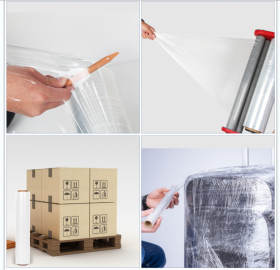Eco-Friendly Disposable Gloves for Sustainable Practices and Environmental Protection.
The Rise of Biodegradable Single-Use Gloves A Sustainable Solution for a Cleaner Future
In an era where environmental consciousness is at an all-time high, the search for sustainable alternatives to everyday products has gained significant momentum. Among these products are single-use gloves, which are commonly used in various sectors, including healthcare, food service, and cleaning. Traditional gloves, often made from latex, vinyl, or other synthetic materials, contribute to the growing problem of plastic waste. In response to this issue, the emergence of biodegradable single-use gloves offers a promising solution for both personal protection and environmental sustainability.
Biodegradable gloves are crafted from natural materials such as cornstarch, PLA (polylactic acid), or other biopolymers that are designed to break down over time when exposed to certain environmental conditions. Unlike their conventional counterparts, which can take hundreds of years to decompose, biodegradable gloves can typically break down within months to a few years, significantly reducing their impact on landfills and ecosystems.
The Rise of Biodegradable Single-Use Gloves A Sustainable Solution for a Cleaner Future
In the food service industry, where sanitation is paramount, the adoption of biodegradable gloves can significantly diminish the ecological footprint associated with food preparation and handling. Restaurants and catering services often use vast quantities of disposable gloves, and making the switch to biodegradable materials can enhance their green credentials and resonate with environmentally conscious consumers. This transition not only promotes sustainability but also encourages other businesses in the sector to follow suit, amplifying the positive impact on the environment.
biodegradable single use gloves

Moreover, the cleaning industry, which heavily relies on single-use gloves, stands to benefit greatly from biodegradable alternatives. Commercial cleaners often utilize gloves in various settings, from office buildings to homes. By choosing biodegradable options, these companies can contribute to a cleaner planet, aligning their service offerings with the growing demand for eco-friendly practices.
Despite the clear advantages of biodegradable single-use gloves, several challenges remain in their widespread adoption. One major issue is the cost difference. Biodegradable gloves are often more expensive than traditional gloves, which can deter some businesses from making the switch. Additionally, there may be concerns about the durability and effectiveness of biodegradable gloves compared to their synthetic counterparts. However, ongoing advancements in material science are continually improving the performance of biodegradable options, making them a viable choice for various applications.
Education and awareness are crucial in driving the adoption of biodegradable single-use gloves. As consumers become more informed about the environmental impact of their choices, businesses are increasingly motivated to adapt to sustainable practices. By promoting the use of biodegradable gloves, we can encourage industries to prioritize environmental responsibility and contribute to a more sustainable future.
In conclusion, the shift towards biodegradable single-use gloves represents a pivotal step in addressing plastic pollution. By adopting these environmentally friendly alternatives, industries such as healthcare, food service, and cleaning can significantly reduce their carbon footprint while maintaining essential protective measures. With continued innovation and a collective commitment to sustainability, biodegradable gloves could pave the way for a cleaner, greener future for all.
-
The Best Uses for Small Trash Bags in Daily LifeNewsJul.01,2025
-
Stylish Reusable Grocery Bags TrendsNewsJul.01,2025
-
Shipping Advantages of Using Bubble Envelopes BulkNewsJul.01,2025
-
How Compostable Mailing Bags Reduce Environmental ImpactNewsJul.01,2025
-
Environmentally - Friendly Bulk Poly MailersNewsJul.01,2025
-
Eco Friendly Custom Laminated Tote BagsNewsJul.01,2025
-
Have the freedom of customizing your custom mailers any way you want! Our dedicated packaging support will help deliver you the mailing experience you need to elevate your shipping experience to the next level! Start making a strong impression on your customers and stand out from your competitors! -
LIYA uses high quality raw materials which directly purchased from large enterprises domestic and overseas such as PetroChina, Sinopec, Sabic, Equate, ExxonMobil, Dow Chemical, Total, and Borouge, ensuring the price advantage and quality of the raw materials. -
LIYA uses high quality raw materials which directly purchased from large enterprises domestic and overseas such as PetroChina, Sinopec, Sabic, Equate, ExxonMobil, Dow Chemical, Total, and Borouge, ensuring the price advantage and quality of the raw materials.





